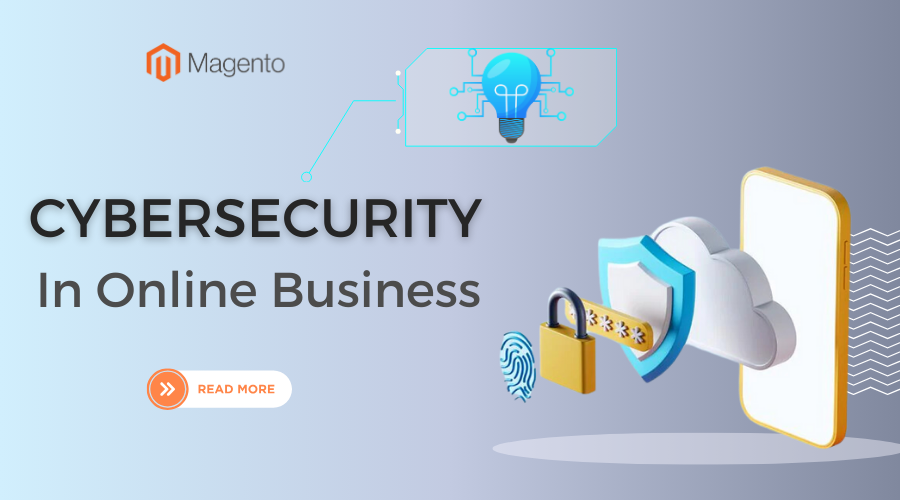
The proliferation of digital technologies has ushered in an era of unprecedented innovation and connectivity in the business world. Companies of all sizes and industries embrace digital platforms and channels to enhance their operations, optimize customer experiences, and create new value propositions.
In doing so, they’ve entered a boundless digital frontier that is reshaping business models and economies on a global scale. However, this relentless march towards digitalization also invites many security risks, making cybersecurity a critical pillar for businesses in the 21st century.
Table of Contents
I. Importance of Cybersecurity in protecting sensitive information
As business processes become increasingly digital, they depend more on securing sensitive information. This information ranges from personal customer data to financial details and trade secrets – all enticing targets for cybercriminals. A compromise in cybersecurity can lead to data breaches, unauthorized access to financial accounts, or even sabotage of critical business functions.
As a financial tech consultant, I’ve seen cybersecurity evolve from an IT afterthought to a boardroom imperative. Protecting this digital goldmine is a legal obligation and a competitive necessity. Strong cybersecurity safeguards are the cornerstone of a trusted digital marketplace where businesses can confidently thrive.
II. The threats of Cyberattacks
The digital threat landscape is a dystopian reality of persistent and evolving dangers. Cyberattacks leveraged against businesses are becoming increasingly sophisticated. What used to be simple scams have evolved into complex, multi-faceted security challenges such as:
- Phishing attacks, which cleverly deceive employees into handing over sensitive credentials or clicking on malicious links,
- Ransomware campaigns, which encrypt critical business data and demand ransom for their release,
- Malware intrusions occur when harmful software disrupts operations, spies on business activities, or, worse, damages systems irreparably.
Instances like the Target breach of 2013 or the colossal Equifax data breach of 2017 demonstrate how even established businesses with significant security investments aren’t impervious to cyber threats. These examples serve as vivid illustrations that bolster the narrative for meticulous and continuous cybersecurity vigilance.
III. The impact of Cyberattacks on business
When a cyber-attack strikes, the aftermath is often catastrophic. Financial repercussions can run into the millions or even billions incurred through incident response efforts, legal fees, compensatory payments to affected parties, and loss of business due to system downtime. However, the reputational harm that follows may be more damaging in the long term.
A company’s brand is its most vital asset; once compromised by a cyberattack, the erosion of customer trust can have lingering effects. Moreover, regulatory non-compliance due to inadequate security measures can bring about severe legal actions, incurring further financial penalties and lasting damage to a company’s standing in the market.

Furthermore, the aftermath of a cyberattack can extend beyond immediate financial and reputational consequences. It often triggers a ripple effect, impacting various stakeholders such as employees, partners, and shareholders. Employee morale may plummet due to concerns over job security and the effectiveness of company leadership in safeguarding sensitive information.
Partnerships and collaborations may be strained as trust diminishes after a breach. Shareholders may experience losses in stock value as investor confidence wanes. Thus, the impact of cyberattacks on businesses reverberates throughout the organizational ecosystem, affecting not only the bottom line but also the overall stability and viability of the enterprise.
IV. Best practices for Cybersecurity in business
Tackling the cybersecurity problem calls for a multi-faceted approach permeating all organizational levels. It begins with the basics, ensuring solid and complex passwords and enforcing ordinary updates to preserve their power. However, it extends into ensuring that each software, mainly those that handle sensitive information, are updated and patched to shield against known vulnerabilities.
Employees regularly represent the primary line of defense and doubtlessly the weakest link; consequently, comprehensive cybersecurity training is vital. Empowering employees with the expertise to identify and respond to threats can dramatically reduce the risk of a safety breach.

In addition, companies must undertake stringent community security measures, set up advanced firewalls, use steady VPNs for far-flung access, and employ state-of-the-art threat detection structures to reveal suspicious activities continuously.
Moreover, businesses should implement a robust system of access controls, ensuring that employees only have access to the information and resources necessary for their roles. This minimizes the potential damage that can occur if a breach does happen.
Regular security audits and assessments are essential to identify vulnerabilities and weaknesses in the existing infrastructure, allowing for timely remediation before attackers can exploit them. Additionally, establishing incident response protocols and conducting regular drills to simulate cyberattack scenarios can help ensure a swift and effective response during a breach.
Finally, fostering a culture of cybersecurity awareness and accountability across the organization is crucial. When every team member understands their role in protecting the company’s assets and actively maintains a secure environment, the overall resilience to cyber threats is significantly enhanced.
V. The future of Cybersecurity in business
As we peer into the horizon, it becomes increasingly clear that the future of cybersecurity is bound to be as dynamic as the threats it aims to counteract. Advancements in AI promise more intelligent, adaptive security systems capable of real-time threat detection and autonomous response. Blockchain technology promises secure, tamper-proof systems that redefine data integrity.
Nevertheless, such promising technologies bring their own set of challenges. Sophisticated cybercriminals quickly exploit new technologies, often adapting faster than their targets can defend. This cat-and-mouse game ensures that cybersecurity will remain a perpetual battlefield, with impacts and implications stretching across every aspect of business.

Furthermore, the proliferation of Internet of Things (IoT) devices introduces new entry points for cyberattacks, requiring businesses to implement robust security measures to protect interconnected networks.
Additionally, as more enterprises embrace cloud computing and remote work arrangements, securing sensitive data stored and transmitted across diverse environments becomes increasingly complex. This necessitates the development of innovative security solutions tailored to the evolving landscape of digital business operations.
Conclusion
Though ripe with opportunities, the digital age mandates a hardened posture toward cybersecurity. The interconnected nature of digital businesses means that a breach anywhere can become everywhere. The importance of cybersecurity resonates with each click, each transaction, and each new digital endeavor businesses undertake. Cybersecurity is not just an IT issue but a foundational business imperative.
It’s a clarion call to action for every business entity to integrate robust cybersecurity measures into their DNA. Vigilance, investment, and continuous adaptation are the watchwords for this ongoing digital saga. Ultimately, only those prioritizing cybersecurity will navigate the digital age with assured success and resilience.












![[SALE OFF] Discount 30% All Premium Extensions On Christmas And New Year 2025 christmas-and-new-year-2025](https://landofcoder.b-cdn.net/wp-content/uploads/2024/12/christmas-and-new-year-2025-1-218x150.png)





